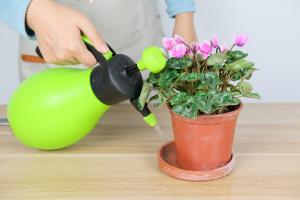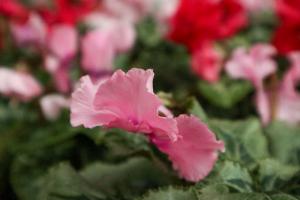Introduction
Choosing the right size plant pot is essential for the health and optimal growth of your plants. A pot that is too small can restrict root growth and cause your plant to become root-bound, while a pot that is too big can hold too much water and cause the roots to rot. In this article, we will discuss how to know what size plant pot is ideal for your plants.
Consider the Size of the Plant
The first thing to consider when choosing the right size plant pot is the size of the plant you are planning to grow. If you are planting a small plant, then a small pot will suffice. However, if you are planting a larger plant, then you will need a larger pot to accommodate its size. As a general rule, the pot should be one-third to one-half the height of the plant.
Check the Pot's Drainage Hole
The size of the pot's drainage hole is also an important factor to consider. If the drainage hole is too small, it can cause water to accumulate at the bottom of the pot, leading to root rot. On the other hand, if the drainage hole is too large, it can cause the soil to dry out too quickly, leading to the death of the plant. The ideal size for a drainage hole is around 1/4 to 1/2 inch in diameter.
Consider the Type of Plant
The type of plant you are growing can also affect the size of the pot you should choose. For plants with shallow roots, such as herbs and succulents, a shallow pot is ideal. For plants with deep roots, such as tomatoes and peppers, a deeper pot is better suited. Additionally, certain plants, such as bamboo, grow quickly and need a larger pot to accommodate their growth.
Consider the Pot's Material
The material of the pot can also affect the size you should choose. Clay pots tend to absorb moisture, which can lead to the soil drying out more quickly. Because of this, you may need to choose a larger pot to accommodate the plant's water needs. On the other hand, plastic pots tend to retain moisture, so a smaller pot may be suitable. Additionally, if you are using a decorative pot, you may need to choose a larger size to ensure that the plant has enough space to grow.
Conclusion
Choosing the right size plant pot is crucial for the health and growth of your plants. When selecting a pot, consider the size of the plant, the pot's drainage hole, the type of plant, and the material of the pot. By taking these factors into account, you can choose a pot that is the perfect size for your plants to thrive.

 how many times do yo...
how many times do yo... how many planted tre...
how many planted tre... how many pine trees ...
how many pine trees ... how many pecan trees...
how many pecan trees... how many plants comp...
how many plants comp... how many plants can ...
how many plants can ... how many plants and ...
how many plants and ... how many pepper plan...
how many pepper plan...































